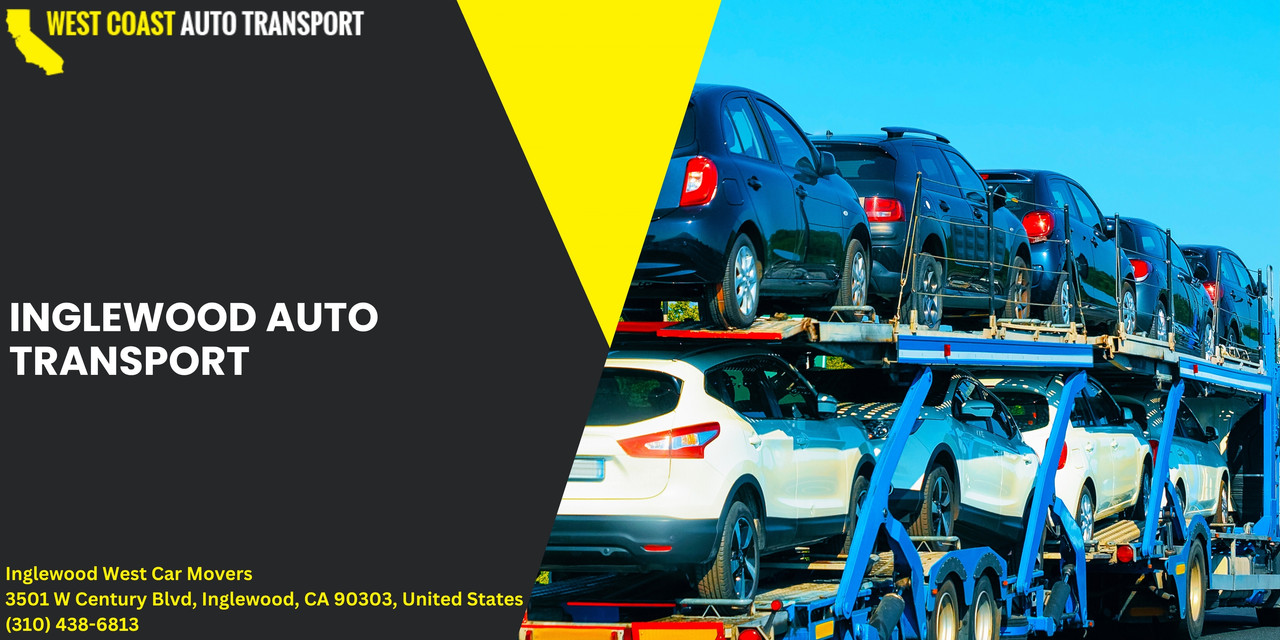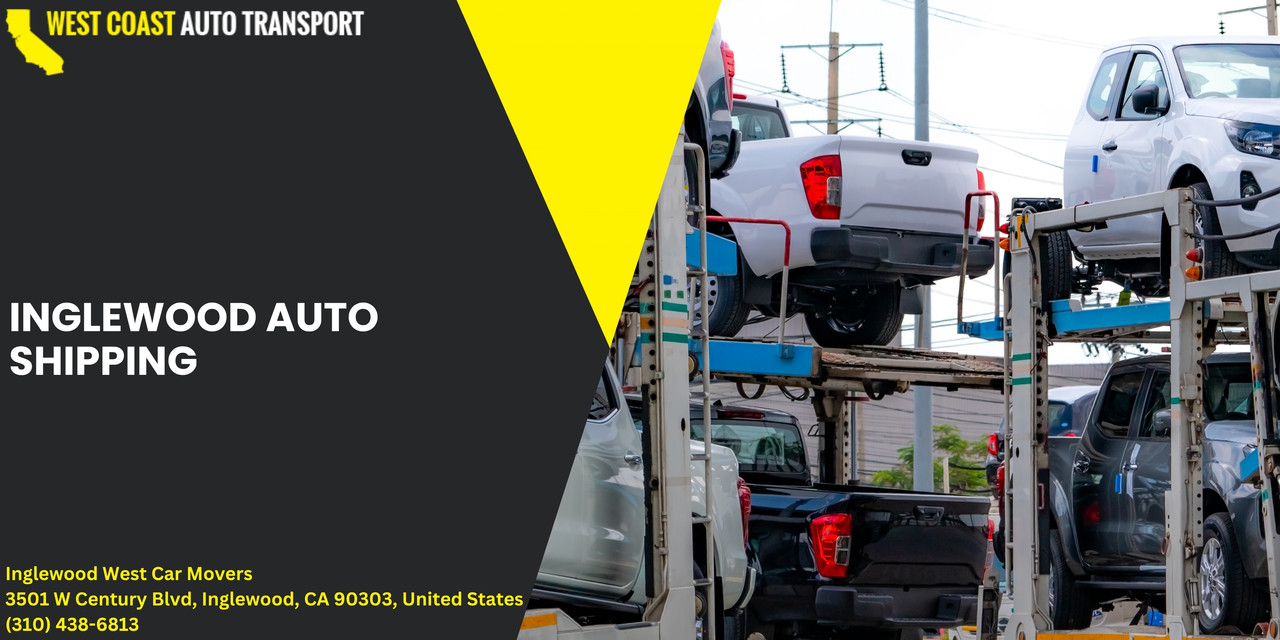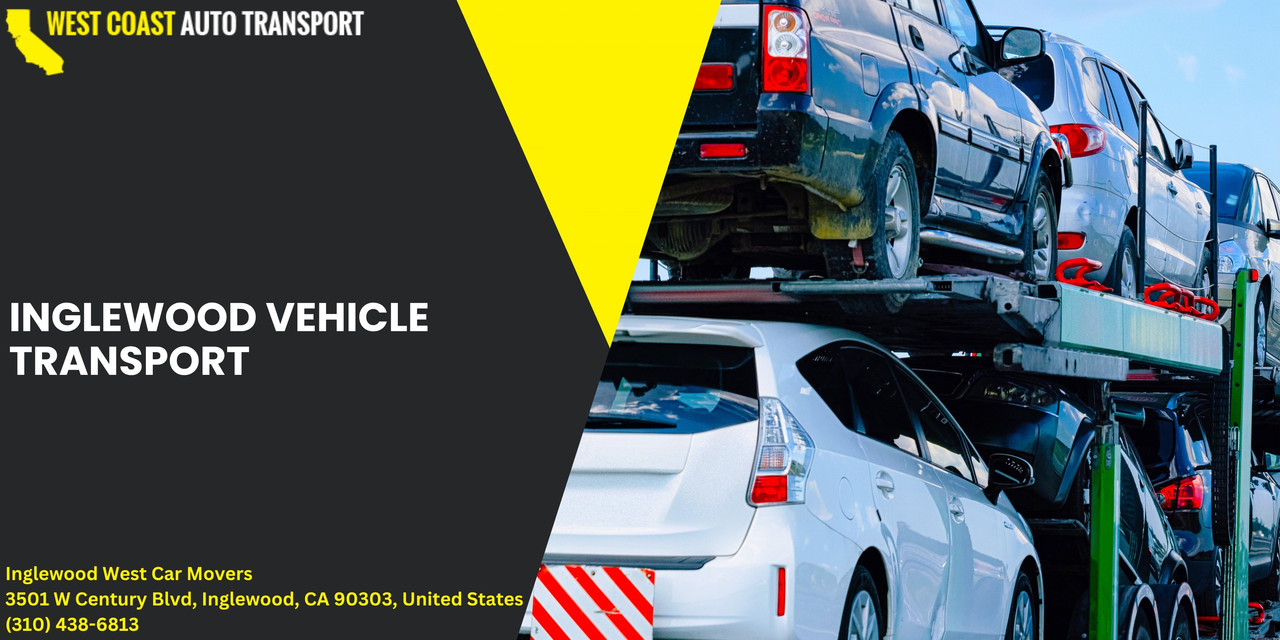If you ship cars in, out, or through Inglewood long enough, you learn to treat the calendar like another lane of traffic. It speeds up, slows down, jams unexpectedly, and occasionally opens up with clean pavement ahead. The difference between a smooth pickup on Manchester Boulevard and a week of reschedules often comes down to when you book, not just who you book. The market for Inglewood auto transport breathes with the seasons, and the best shippers work with that rhythm rather than fight it.
I have moved vehicles through Inglewood for relocations, film productions, dealership swaps, and snowbird migrations. The neighborhood mix of dense residential streets and commercial arteries, coupled with proximity to LAX and SoFi Stadium, adds a layer of nuance you do not see in more suburban markets. If you understand how carrier availability, driver preferences, and Los Angeles traffic patterns evolve month by month, you can shave days off transit time and keep pricing predictable. If you ignore it, you will pay surge rates and wait behind higher-margin loads.

Where the calendar pinches: true peak season around Inglewood
In coastal Southern California, the demand spikes are not just about weather. They track life events, regional events, and national migration patterns. In Inglewood, the big pressure points tend to be:
- Late May through early August: college moves, family relocations, and dealership volume. Expect residential pickups near Century Heights and Morningside Park to take longer because carriers prefer easy-access commercial stops during heavy weeks. Late September through mid-November: the early snowbird wave and post-summer dealer reshuffling. Many carriers run west-to-east routes with a premium on full loads heading out of California. Late January through early March: the return snowbird wave and tax-refund purchases, plus award-season logistics across Los Angeles that complicate routing around venue closures.
Those windows account for the majority of rate spikes. If SoFi Stadium hosts a major event weekend, you can add localized gridlock and staging restrictions that ripple a couple of days on either side. Carriers hate idling in traffic with ten units onboard, so they either push pickups to early mornings or tack on an urban service premium. If your schedule is flexible, avoiding those weekends alone can reduce your total by 5 to 10 percent.
The anatomy of a quote: how peak and off-peak shape your price
A line-item explanation helps. Most Inglewood auto shippers build quotes around a few variables: lane desirability, distance, vehicle size, open versus enclosed transport, pickup access, and urgency. The calendar modulates all of them.
During peak weeks, a Los Angeles to Phoenix open carrier spot that usually lands in the 600 to 800 dollar range can push to 750 to 1,000, sometimes more if your pickup falls inside a tight window. The reason is not mystery fees, it is basic load board economics. When demand exceeds truck space, carriers cherry-pick the easiest, best-paying loads. Residential cul-de-sacs, low-clearance streets, and evening-only pickups slide down the priority list. You will be asked to meet at a wider street or retail parking lot, which is often safer for your car anyway.
Off-peak months, especially mid-October outside of holidays and mid-February after the first snowbird push, look different. Carriers need to keep wheels turning, so slightly less desirable lanes become competitive again. That same LA to Phoenix lane settles back toward the lower end. If you request enclosed service for a high-value coupe, the delta between open and enclosed also shrinks. When enclosed carriers are hungry, they will negotiate to fill a trailer rather than deadhead.
Pickup in Inglewood: practical constraints that matter more in peak
Inglewood is dense and evolving. Many blocks are not ideal for a 75-foot combination rig. In peak season, a driver with a full trailer will not gamble on a tight approach. On Arbor Vitae or Prairie, the width and turning radius can be unforgiving during event hours. Add school zones and street cleaning days, and last-minute re-routes happen. The professionals step in by pre-planning a meeting point. I have used the larger lots along Century or near major retail corridors when curb space was clearly going to be tight. Thirty minutes of planning saves a week of missed connections.
The same applies to timing. Early morning pickups before the 405 and 105 stack up are worth the lost sleep. Carriers who can clear the basin by 9 a.m. are more likely to keep your transit time tight. In peak months, they will give those golden slots to customers who meet them on time and avoid negotiation on site. Build that into your schedule and you will be treated like a preferred shipper even if it is your first time.
What changes when you book off-peak
The atmosphere relaxes. Dispatchers return calls faster because they are not juggling as many loads. Drivers have more patience for tight streets. And your options broaden. You may be able to request a specific window, a near-door pickup, and even a custom delivery time on the far end without paying a premium. I have secured enclosed transport for classic cars in January for only 30 to 40 percent above open carrier rates, when the same booking in July would have doubled that.
Off-peak also gives you leverage to request white-glove touches that carriers decline in heavy weeks. Want the driver to document undercarriage photos during loading? Ask. Need a call 30 minutes before arrival to clear a narrow block? Reasonable. If you are moving a non-running vehicle, off-peak is hands down the better choice. A winch load with a blocked driveway in high season sits at the bottom of every dispatcher’s priority list.
The role of Inglewood auto shippers versus direct carriers
Shippers based in or focused on Inglewood often know which streets are workable, which apartment complexes have gates that pinch a trailer, and which lots tolerate brief staging. They keep notes on security guards who are patient and which building managers enforce tow-away rules. That local muscle matters more in peak season. With half the city on the move, one wrong guess costs a day. In off-peak months, a national broker can still perform fine, but during crunch time, the Inglewood auto shippers who live the area’s constraints can solve problems before they appear.
There is a trade-off. The most embedded local outfits sometimes keep a tighter stable of preferred carriers, which can be a strength for consistency but limit last-minute price competition. If you value speed and predictability in July and August, lean local. If you are optimizing for price in February, widen your net across reputable national options and let them bid for your load.
How far in advance to book, by season and scenario
Lead time is the most forgiving lever you control. In peak windows, commit 10 to 14 days ahead if you have any constraints at all. That gives a dispatcher time to match your car with a driver who already plans to traverse the 105 or 405 corridors and who is comfortable with a nearby Inglewood car transportation services meeting point. If you need enclosed service, stretch the lead time to two or even three weeks. Enclosed capacity thins out exactly when collectors and high-net-worth clients move summer cars.

In off-peak periods, a week of lead time is ample for open transport. I have placed same-week loads in January and watched them move within 48 hours at fair rates. Short notice is still a gamble near major event weekends, but the odds are better when the overall market is quiet.
Weather is not the problem, water is
Southern California does not scare carriers with snow, but winter rains can reshape the calendar. An atmospheric river system in January will snarl freeways, close surface streets, and push drivers to delay pickups rather than risk slow rollovers from standing water. When that happens, the market behaves like a mini-peak. Rates creep up, availability tightens, and everyone competes for the first dry day. If your dates line up with a forecasted storm, either accelerate your pickup to beat the rain by two days or push to the clear window by three. Straddling the storm is the most expensive and least predictable option.
Open vs. enclosed: seasonal pricing reality
Open carriers dominate the LA basin. They move everything from daily drivers to mid-range SUVs. The price gap to enclosed tightens in off-peak months because enclosed operators hate running half-empty. In peak summer, the gap widens as affluent customers ship sports cars along the coast or eastward. If your vehicle is a standard sedan, off-peak open transport is the value play. If you drive a lowered coupe or a long-wheelbase luxury SUV that benefits from liftgate loading, consider booking enclosed in shoulder months. The premium buys careful loading angles and protection from coastal grit and construction debris that kicks up on the 405.
Understanding load boards without having to live on them
Most brokers, including Inglewood auto shipping specialists, post your load to national boards where carriers choose their next runs. In peak season, a moderately priced posting can sit for a day while pricier, easier pickups get snatched within minutes. That lag is not a sign you are being ignored. It is a sign the board is saturated with options. Two fixes help: slightly increase the offer or improve the pickup conditions. Offering a realistic meeting point, a broad time window, and confirmation that the vehicle rolls, steers, and brakes often beats a higher price with constraints.
In quiet months, the board flips. Carriers call brokers quickly, sometimes asking whether a pickup can happen today. If your schedule allows, say yes. Same-day flexibility often earns a discount or at least locks a solid driver before other shippers step in.
Real examples from around Inglewood
A film car parked near Market Street needed enclosed transport to Santa Fe. The request hit during late February, just after Oscars week when several high-net fleets were repositioning. We booked ten days out and still watched the first driver drop the load to take a higher-paying multi-car pickup at LAX. A local Inglewood auto transport dispatcher pivoted to a boutique enclosed hauler out of Gardena who had a return leg to Texas. The pivot worked because the dispatcher recognized the hauler’s pattern and knew Tuesday morning would be clear of stadium traffic. The rate was 12 percent higher than a January quote, but we avoided a multiday delay.
Another case involved a family moving from Inglewood to Tempe in mid-July. They requested an evening pickup on a narrow street with speed humps. We reconfigured the plan to a morning meetup at a supermarket lot near Century and reduced the bid by 75 dollars by removing the constraint. The load was picked up on time, and the car arrived next day. In peak season, details like an easy meeting point are worth real money.
Insurance, inspection, and documentation do not get seasonal discounts
Shippers cut deals on price, not on due diligence. Whether you book in July or January, your best protection comes from thorough documentation. Clean the car so damage is visible, photograph all sides in daylight, include close-ups of prior chips or scratches, and capture odometer and VIN photos. During peak weeks, drivers move fast at pickups, and that is exactly when a missed notation can bite. I build time for the bill of lading walkaround and do not let the truck roll until both parties agree on the marks. In off-peak, you will often get more relaxed inspections, but keep the same discipline. It is your record, not the season, that decides a claim.
Pricing expectations grounded in real lanes
Rates move, but ballparks help. For open transport leaving Inglewood:
- To Phoenix or Las Vegas, budget 600 to 1,000 dollars depending on season and access. Peak weeks sit toward the top, off-peak toward the bottom. To the Bay Area, 450 to 800. Shorter distance but tough timing around the 5 increases variability in heavy months. To Dallas, 950 to 1,400. Peak months mean carriers prefer full, easy pickups; residential constraints push you higher. To Miami or East Coast cities, 1,300 to 2,000 for standard sedans. Snowbird months spike outbound rates until carriers balance their return legs.
Enclosed typically adds 40 to 120 percent depending on availability. A limited-height, low-clearance sports car in July can jump sharply because you need a specific trailer configuration. In January, the premium often settles closer to the lower end.

When to say no to a pickup date
Sometimes the best move is to skip a date the market favors against you. If a SoFi doubleheader lands on your chosen weekend, bump your pickup to Monday morning. If the forecast calls for a heavy rain day on your slot, shift earlier rather than later. If your building enforces a tenant move day that conflicts with the driver’s hours, do not force it. Forcing a tight window invites a no-show or a carrier swap, which resets the clock and erodes trust. The best Inglewood auto shippers will tell you when a date is cursed. Listen to them.
Working the off-peak advantage without over-optimizing
In quiet months, do not chase the last 25 dollars. Choose a well-vetted carrier with a clean insurance certificate and recent references. Commoditizing every job to the lowest bidder is how you end up with reschedules and radio silence. I like to pay fair off-peak rates to drivers who communicate, show up on time, and protect vehicles. Those relationships pay dividends when you need a favor in July. The carrier who remembers you treated him fairly in January will fit you in on a tight day when others cannot.
A short checklist you can actually use
- Decide your target week, then check Inglewood event calendars and weather. Dodge big stadium weekends and heavy rain. Lock your meeting point early. Aim for a wide lot or a broad street with easy ingress and egress. Set a morning pickup window, especially in peak months, and be ready 15 minutes early. Photograph the car thoroughly, note pre-existing marks, and walk the bill of lading with the driver. Keep one fallback day in your plan. A little slack saves money and reduces stress.
Red flags and green lights when choosing a shipper
One pattern stands out after years in this market. The best operators explain the why behind their recommendations. If a broker dismisses Los Angeles traffic dynamics or waves off the need for a meeting point in Inglewood, they probably do not run enough loads here. Conversely, a dispatcher who talks specifics, like suggesting an early slot to clear the 105 or referencing recent closures around Prairie, signals real local knowledge.
In peak weeks, ask how they handle carrier drops. Every serious shipper has a fallback plan when a driver bails for a richer load. In off-peak months, ask about communication cadence. You want dispatch who updates you without prompting, especially if weather shifts the schedule.
The quiet costs that seasonality exposes
Time value matters. If a reschedule costs you a day of work or an extra rideshare budget, add those numbers when comparing a slightly higher quote that promises a cleaner pickup. In July, I will pay a small premium for a shipper who can anchor a morning slot that fits my day. In January, I will trade a low price for better visibility in transit, especially if a storm is inbound. The cheapest quote is not the cheapest outcome if it extends the timeline.
Final thought, minus the neat bow
If you live or work in Inglewood, you already navigate crowds, events, and traffic choreography that outsiders underestimate. Treat vehicle shipping the same way. Align your dates with the city’s pulse, use meeting points that respect the hardware drivers bring, and give yourself just enough buffer to absorb the unexpected. The calendar is not an obstacle. It is a tool. When you use it, Inglewood auto transport feels routine rather than risky. And when peak weeks swell, the clients who planned for them glide past the gridlock while others haggle on the curb.